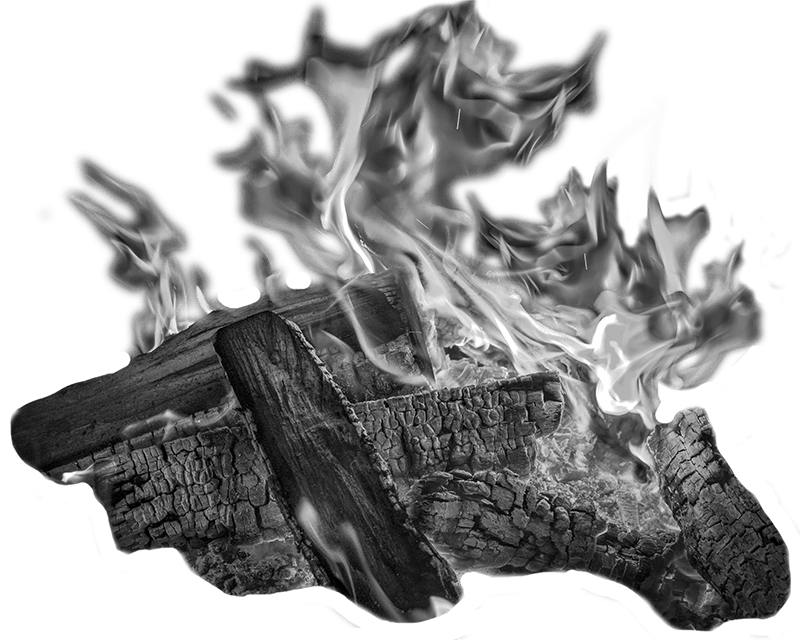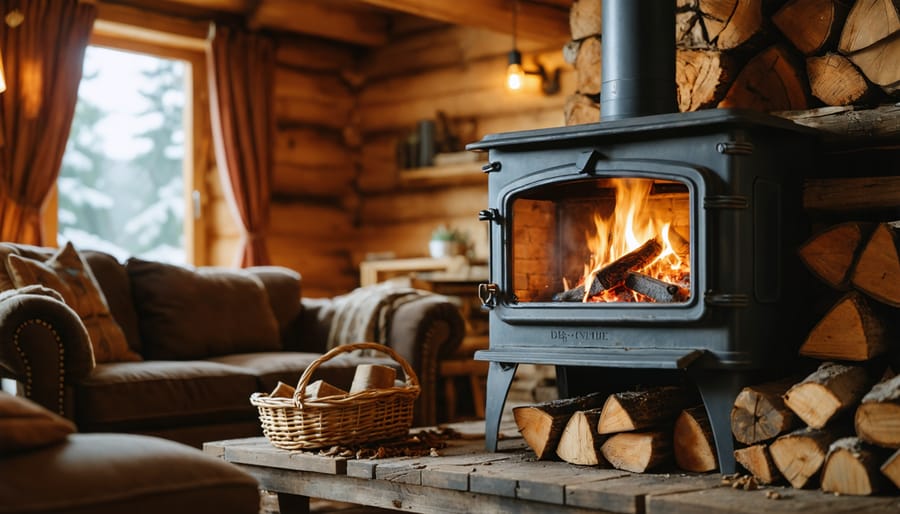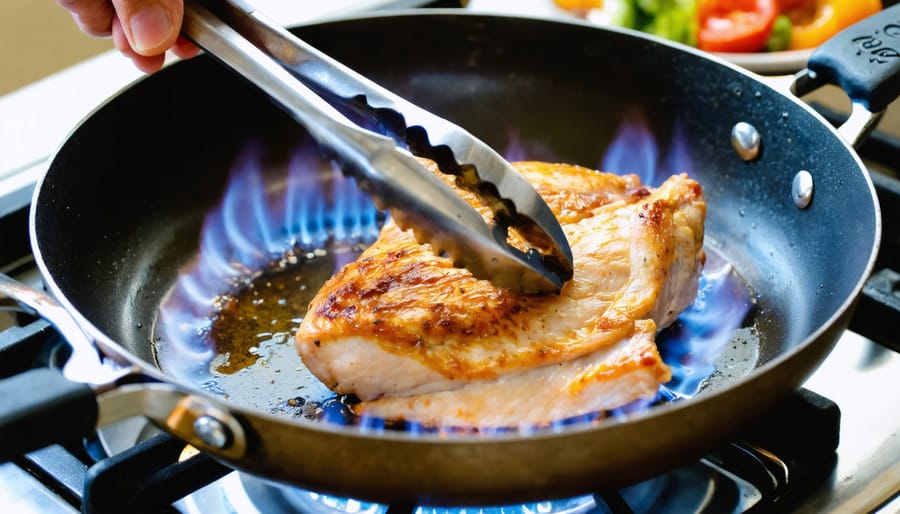Regular wood stove servicing protects your family’s safety and maximizes your heating efficiency. Understanding how wood stoves operate reveals why annual maintenance prevents dangerous creosote buildup, extends equipment life, and ensures optimal performance during cold months. Professional inspection identifies critical issues before they become hazards, while proper cleaning removes combustible deposits that could trigger chimney fires. Neglecting maintenance not only risks your home’s safety but also decreases heating efficiency by up to 30%, leading to higher fuel costs and reduced comfort. Whether tackling basic maintenance yourself or scheduling professional service, protecting your wood stove investment demands regular attention to keep your home warm and secure through every heating season.
This introduction immediately addresses safety concerns, connects maintenance to performance, and emphasizes both DIY and professional service value while maintaining an authoritative yet approachable tone. The internal link is naturally integrated within the educational context of the opening paragraph.
Signs Your Wood Stove Needs Professional Service
Performance Warning Signs
Your wood stove should consistently provide reliable heat and comfort, but certain warning signs indicate it’s time for servicing. If you notice poor heat output despite burning seasoned wood, this could signal a buildup of creosote or issues with proper vent management. Smoke backing up into your home is another red flag that shouldn’t be ignored, as it could indicate a dangerous chimney blockage or draft problems.
Watch for difficulty in starting or maintaining fires, which might suggest air intake issues or damaged gaskets. Excessive ash accumulation, unusual burning patterns, or visible rust spots are also cause for concern. If your glass door becomes blackened quickly after cleaning, this often points to incomplete combustion or ventilation problems.
Strange sounds like rushing air or whistling might indicate gaps in the door seals or compromised connections. Pay attention to any unusual odors, particularly during operation, as they could signal dangerous flue problems requiring immediate attention. These warning signs are your stove’s way of communicating that professional service is needed to maintain safe and efficient operation.
Visual Inspection Signals
Regular visual inspections can help you identify potential issues before they become serious problems. Check for cracks or damage in the stove’s body, particularly around seams and joints. Pay close attention to the door gasket – if it appears flattened, brittle, or shows gaps when closed, it’s time for replacement. The firebricks inside your stove should be intact without significant crumbling or large cracks.
Look for signs of rust or corrosion, especially around the stove’s base and air vents. The glass door should be free from heavy buildup or unusual discoloration that won’t clean off. Warping or distortion in any part of the stove requires immediate attention, as this could indicate overheating issues.
Watch for white or brown stains on the exterior of your chimney, which might suggest water damage or improper ventilation. Inside the stove, excessive ash accumulation or uneven burning patterns could signal airflow problems. If you notice any unusual odors during operation or visible smoke in your home, these are clear signs that professional servicing is needed.
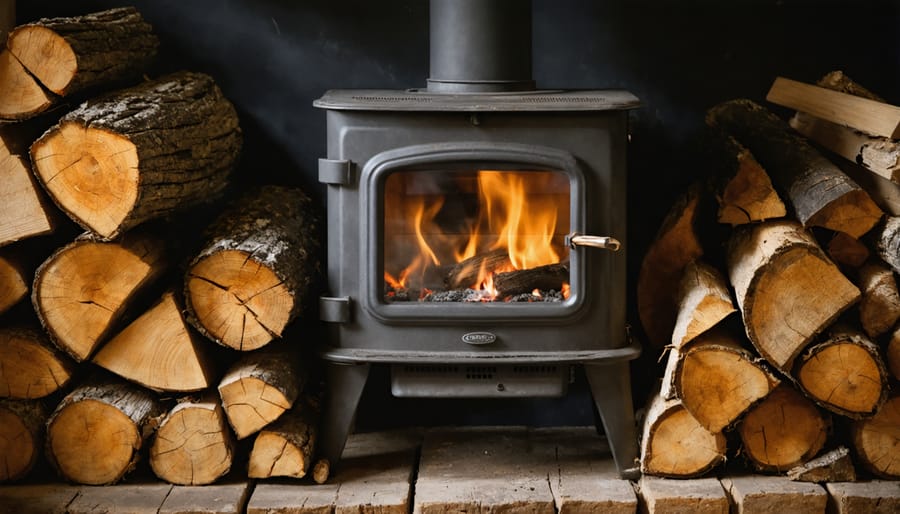
Essential Annual Maintenance Tasks
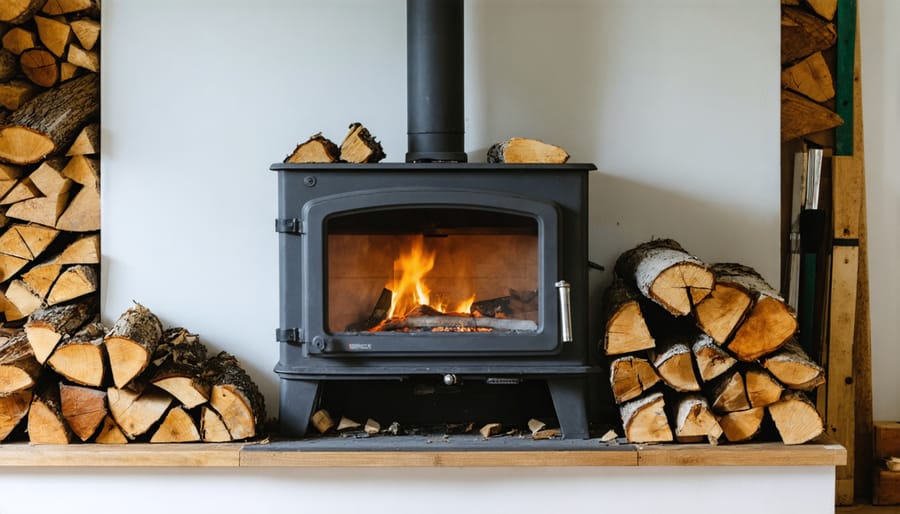
Chimney System Cleaning
Regular chimney system cleaning is essential for maintaining both the efficiency and safety of your wood stove setup. Over time, creosote – a highly flammable substance – builds up inside your chimney, creating a serious fire hazard if left unchecked. Professional cleaning ensures these deposits are thoroughly removed, significantly reducing the risk of chimney fires.
A comprehensive chimney cleaning service typically includes inspection and cleaning of the flue liner, smoke chamber, and damper area. Professionals use specialized brushes and vacuum systems to remove soot, creosote, and other debris that accumulates throughout the heating season. They’ll also check for any structural issues, such as cracked flue tiles or deteriorating mortar, which could compromise your system’s safety.
The National Fire Protection Association recommends annual chimney inspections and cleaning when necessary. However, if you use your wood stove frequently (more than three times per week during heating season), you might need more frequent cleanings. A good rule of thumb is to schedule a cleaning when creosote buildup reaches 1/8 inch thickness.
During the cleaning process, professionals will also verify proper draft function and ensure all components are working correctly. They’ll examine the chimney cap and crown for damage and check that your system meets current safety codes. This thorough approach not only prevents potential hazards but also helps maintain optimal stove performance and efficiency.
Component Inspection and Replacement
Regular inspection of your wood stove’s components is crucial for maintaining its efficiency and safety. Start by examining the door gaskets, which create an airtight seal when the stove is closed. These gaskets can become compressed or damaged over time, leading to reduced efficiency. To check their condition, close the door on a dollar bill – if you can easily pull the bill out, it’s time for a replacement.
Firebricks are another essential component requiring attention. These heat-resistant bricks protect your stove’s metal walls and help maintain consistent burning temperatures. Inspect them for cracks, chips, or crumbling. While small cracks might be acceptable, severely damaged firebricks should be replaced immediately to prevent heat damage to your stove’s structure.
Don’t forget about baffle plate maintenance, as this component is vital for optimal heat efficiency. Look for warping or deterioration, which can affect your stove’s performance. The air wash system should also be checked for proper functionality to keep your glass door clean.
Other components to inspect include the door hinges, handles, and air control mechanisms. These moving parts can become loose or worn over time. Keep replacement parts on hand for common wear items, and always use manufacturer-approved components to ensure proper fit and function. Regular component checks can prevent costly repairs and extend your stove’s lifespan significantly.
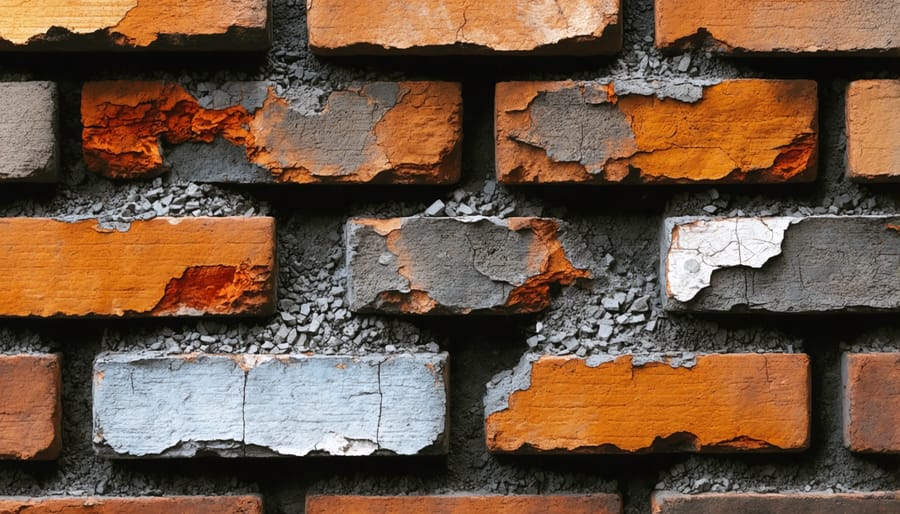
Safety System Verification
A robust safety system is your first line of defense when operating a wood stove. Start by testing your smoke detectors monthly, ensuring they’re installed both near the stove area and in sleeping areas. Replace batteries twice yearly, typically during daylight savings time changes, and replace units entirely every 10 years.
Carbon monoxide detectors are equally crucial, as wood stoves can produce this odorless, deadly gas. Install CO monitors on each floor of your home, particularly near bedrooms. Test them monthly and replace batteries according to manufacturer specifications. Modern CO detectors last about 5-7 years before needing replacement.
Check your fire extinguisher’s pressure gauge regularly to ensure it’s in the green zone. Keep it easily accessible, but not so close to the stove that you couldn’t reach it during a fire. ABC-type extinguishers are best suited for wood stove areas as they can handle multiple fire types.
Verify that your hearth protection meets current safety standards, ensuring proper clearance from combustible materials. Inspect heat shields and wall protection systems for damage or deterioration. Keep a metal ash bucket with a tight-fitting lid nearby for safe ash disposal.
Remember to maintain clear pathways around your stove and review your home evacuation plan with family members regularly. These simple verification steps can prevent dangerous situations and provide peace of mind during the heating season.
DIY Maintenance Between Services
Weekly Cleaning Routine
Maintaining a regular weekly cleaning routine is essential to keep your wood stove operating efficiently and safely. The most important task is managing ash buildup, which should be done at least once or twice a week during the heating season. To properly clean your wood stove, wait until the ashes are completely cool – typically 12-24 hours after your last fire.
Start by putting on protective gloves and placing a metal ash bucket nearby. Using a fireplace shovel, carefully remove the ashes, leaving about an inch at the bottom, which helps insulate the firebox and makes starting your next fire easier. Never use a household vacuum for ash removal, as hidden embers can cause fire hazards.
Wipe down the glass door with a damp newspaper dipped in cool ashes – this natural approach works surprisingly well for removing soot buildup. For stubborn spots, use a specialized wood stove glass cleaner. Check the door gaskets weekly for signs of wear or damage, ensuring they maintain a tight seal.
Clean the surrounding hearth area of any scattered ashes or debris. This not only maintains appearance but prevents ash from being tracked through your home. Finally, inspect the wood stove’s exterior surfaces, wiping them down with a dry cloth to remove dust and prevent rust formation.
Remember to dispose of ashes in a metal container stored outdoors on a non-combustible surface, away from buildings and flammable materials. Even cool-feeling ashes can harbor hot embers for several days.
Monthly Check-ups
Regular monthly check-ups are essential for keeping your wood stove operating safely and efficiently throughout the heating season. Start by inspecting the door gaskets for any signs of wear or damage, as these seals are crucial for controlling airflow and preventing smoke leakage. Test the seal by closing the door on a dollar bill – if you can easily pull the bill out, it’s time to replace the gasket.
Examine your chimney cap and spark arrestor for any blockages from debris or bird nests, which can impede proper ventilation. Inside the stove, check the firebricks and internal baffle plates for cracks or deterioration. While you’re at it, focus on maintaining clear stove glass to ensure optimal fire viewing and spot potential combustion issues early.
Pay special attention to your ash levels, ensuring they don’t build up above the bottom of the door opening. Empty the ash pan when it’s about two-thirds full, but always leave a thin layer of ash for better heat distribution. Check all visible nuts and bolts for tightness, as the heating and cooling cycles can cause them to loosen over time.
Inspect the chimney connector pipes for any signs of rust, separation at the seams, or loose connections. Look for any white or brown staining on the exterior pipes, which could indicate dangerous creosote leakage. Finally, test your carbon monoxide and smoke detectors monthly to ensure your family’s safety, replacing batteries as needed.
Finding the Right Service Professional
Selecting the right professional for your wood stove servicing is crucial for both safety and optimal performance. Start by looking for certified technicians who have completed training through recognized organizations like the National Fireplace Institute (NFI) or Chimney Safety Institute of America (CSIA). These certifications demonstrate a commitment to professional standards and up-to-date knowledge.
When evaluating potential service professionals, ask about their specific experience with your wood stove model and brand. A qualified technician should be able to provide references and share examples of similar work they’ve completed. Don’t hesitate to request proof of insurance and local licensing – this protects both you and your property.
Consider seeking recommendations from local fireplace retailers, hardware stores, or fellow wood stove owners. Online reviews can be helpful, but personal referrals often provide more reliable insights into a technician’s work quality and professionalism. Look for professionals who offer detailed written estimates and clearly explain their inspection and servicing process.
A reputable service professional should be willing to conduct a thorough initial assessment and provide documentation of their findings. They should ask questions about your wood stove’s usage patterns, any issues you’ve noticed, and your maintenance history. Be wary of technicians who make dramatic claims or pressure you into immediate expensive repairs without proper explanation.
Price shouldn’t be your only consideration – quality work often comes at a fair price. Request itemized quotes that detail all services to be performed, including parts and labor. A good technician will also provide maintenance recommendations and tips for extending your wood stove’s lifespan between professional services.
Remember that establishing a relationship with a reliable service professional can benefit you in the long run. Regular maintenance by the same qualified technician means they’ll be familiar with your system’s history and can spot potential issues before they become major problems.
Regular maintenance of your wood stove is more than just a routine task – it’s an investment in your home’s comfort, safety, and efficiency. By following proper maintenance procedures and scheduling professional servicing, you’re not only extending the life of your wood stove but also ensuring it operates at peak performance throughout the heating season.
Professional servicing may seem like an additional expense, but when you consider the benefits – improved efficiency, reduced risk of chimney fires, lower fuel consumption, and enhanced safety – it becomes clear that it’s a worthwhile investment. Regular maintenance can help you avoid costly repairs down the line and maintain your home’s warmth during the coldest months.
Remember that while there are many maintenance tasks you can perform yourself, certain aspects of wood stove care require professional expertise. Annual inspections and cleanings by certified technicians provide peace of mind and ensure that all components of your heating system are functioning correctly.
As we become increasingly conscious of our environmental impact, maintaining your wood stove properly also contributes to cleaner burning and reduced emissions. A well-maintained wood stove is not just a reliable heat source; it’s a responsible choice for both your home and the environment.
Make wood stove maintenance a priority in your home care routine, and you’ll enjoy the cozy, efficient warmth of your stove for many years to come.
